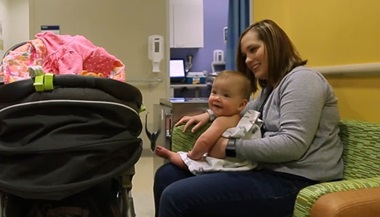Neural Tube Defects
Neural tube defects, also known as spinal dysraphisms, are a category of neurological disorders related to malformations of the spinal cord, such as spina bifida, anencephaly, meningocele, myelomeningocele and tethered spinal cord syndrome.
What You Need to Know
- Neural tube defects can affect bones of the spine, the spinal cord or the nerve roots that extend from the spine into the body.
- The cause is not clear but may be related to genetics, maternal nutrition (including folic acid deficiency) during pregnancy or other factors.
- Spina bifida is the most common neural tube defect, affecting approximately one out of every 1,000 newborns.
- In some situations, surgery may address these defects and their symptoms.
How Neural Tube Defects Occur
Neural tube defects result from the beginnings of the embryo’s nervous system (the neural tube) failing to close completely before birth.
The neural tube forms very early in embryonic development — just one month after conception, sometimes before the mother knows she is pregnant. It starts as a flat, ribbon-like structure that rolls together, lengthwise, to form the tube that will normally grow into the brain and spinal cord.
If the seam of the neural tube does not close correctly, portions of the spine, the covering of the spinal cord (meninges) or the cord itself can push outside of the back as the fetus grows.
Types of Neural Tube Defects
Two of the most common neural tube defects are spina bifida and tethered cord syndrome.
What is spina bifida?
Each year, one in 1,000 babies is born with spina bifida (meningomyelocele), a malformation of the bones (vertebrae) and skin surrounding the spine that can lead to serious infections, problems with bladder and bowel function, hydrocephalus, and paralysis. In most cases, surgical correction of the neural tube defect is necessary soon after birth.
Many problems associated with spina bifida can be managed well with the right treatment, and infants born with spinal neural tube defects can lead full lives.
What is tethered spinal cord syndrome?
Tethered spinal cord syndrome occurs when the spinal cord is abnormally attached to surrounding tissue. Failure to detect a tethered spinal cord can lead to a sudden, catastrophic injury during childhood or adolescence, such as paralysis.
Tethered spinal cord syndrome can be diagnosed through the detection of certain skin abnormalities along the midline of the back. Diagnosis may be confirmed by MRI scans and surgery is usually indicated to prevent any future neurological damage.
Spinal Subtraction Surgery | When Less Offers More
How are neural tube defects diagnosed?
If a child is born with a neural tube defect, such as spina bifida, a thorough evaluation by a pediatric neurosurgeon can help determine the best treatment option.
Your child’s doctor will conduct a thorough physical, ask for a detailed family and patient history and may order imaging of the spine using an MRI or ultrasound scan.
Treatment for Neural Tube Defects
The ideal treatment approach involves multiple specialties in reviewing the cases of children with neural tube defects, including pediatric neurosurgeons, pediatric neurologists, and pediatric urologists, among others.
Surgery for Neural Tube Defects
The purpose of surgery is to correct the physical malformation. If the child’s spinal cord is exposed to the skin, early surgical repair is essential to prevent infection and neurological deficits.
In the case of tethered spinal cord syndrome, a pediatric neurosurgeon will perform surgery to release the tether. If there are areas of fat intertwined within the nerves, the pediatric neurosurgeon will remove these as well during surgery.
After surgery, follow-up care is extremely important to monitor the child’s recovery. Your pediatric neurosurgeon will schedule follow-up appointments to make sure your child is making progress, and seeing the other specialists is important to your child’s overall well-being.






